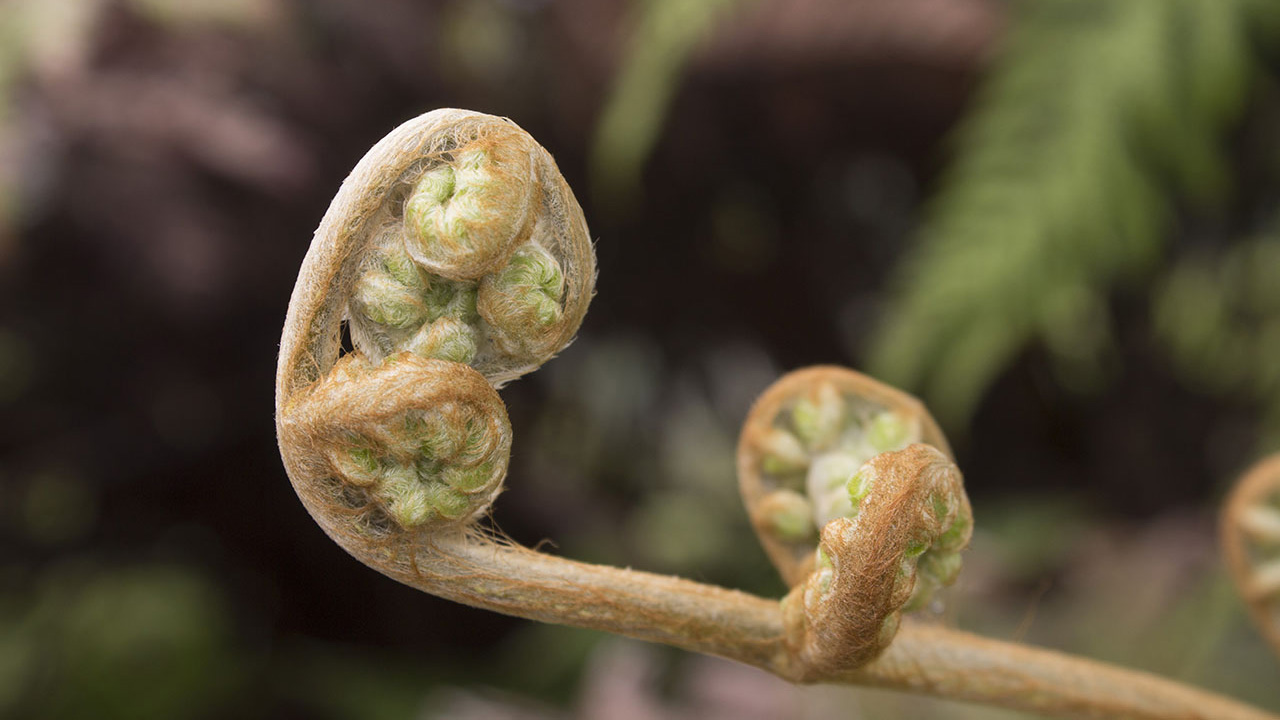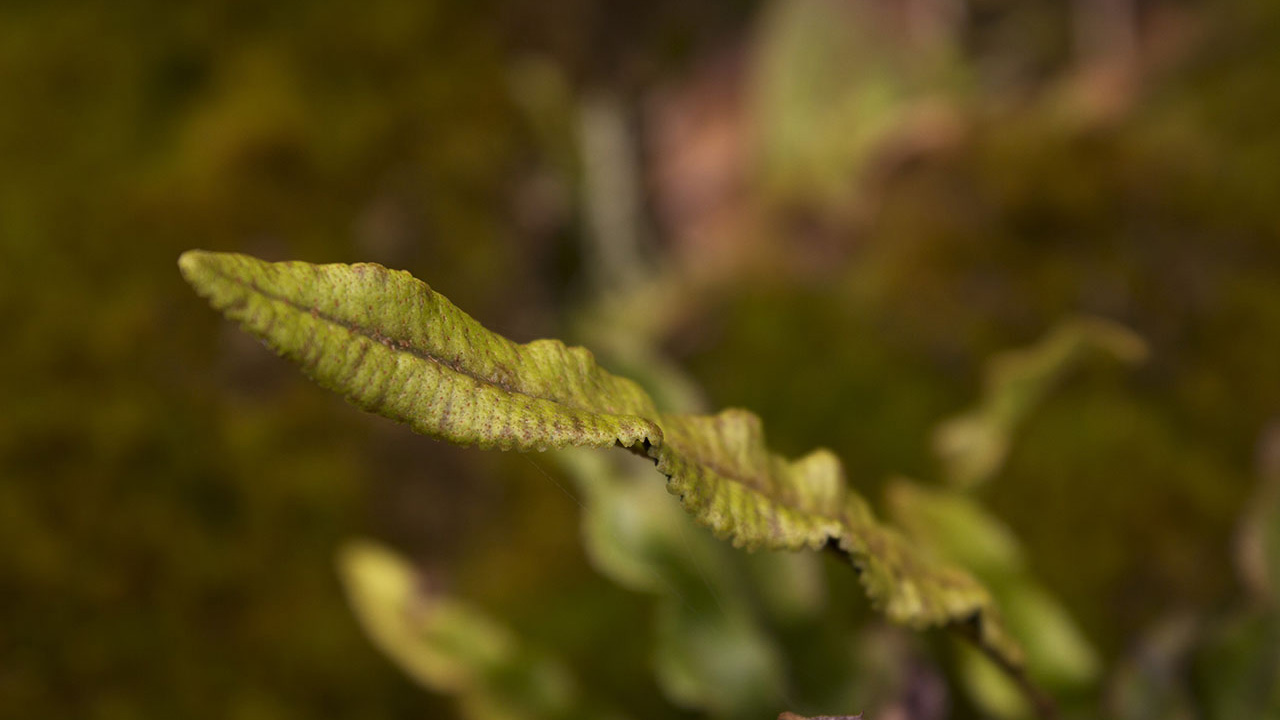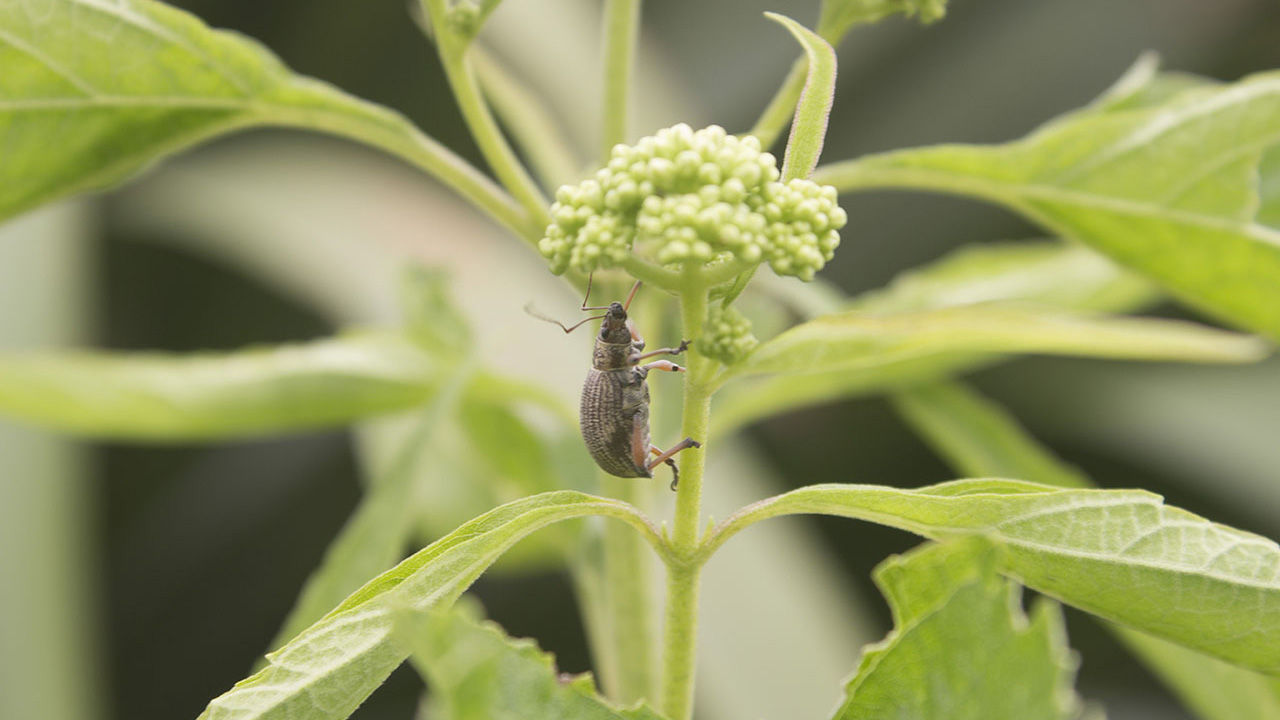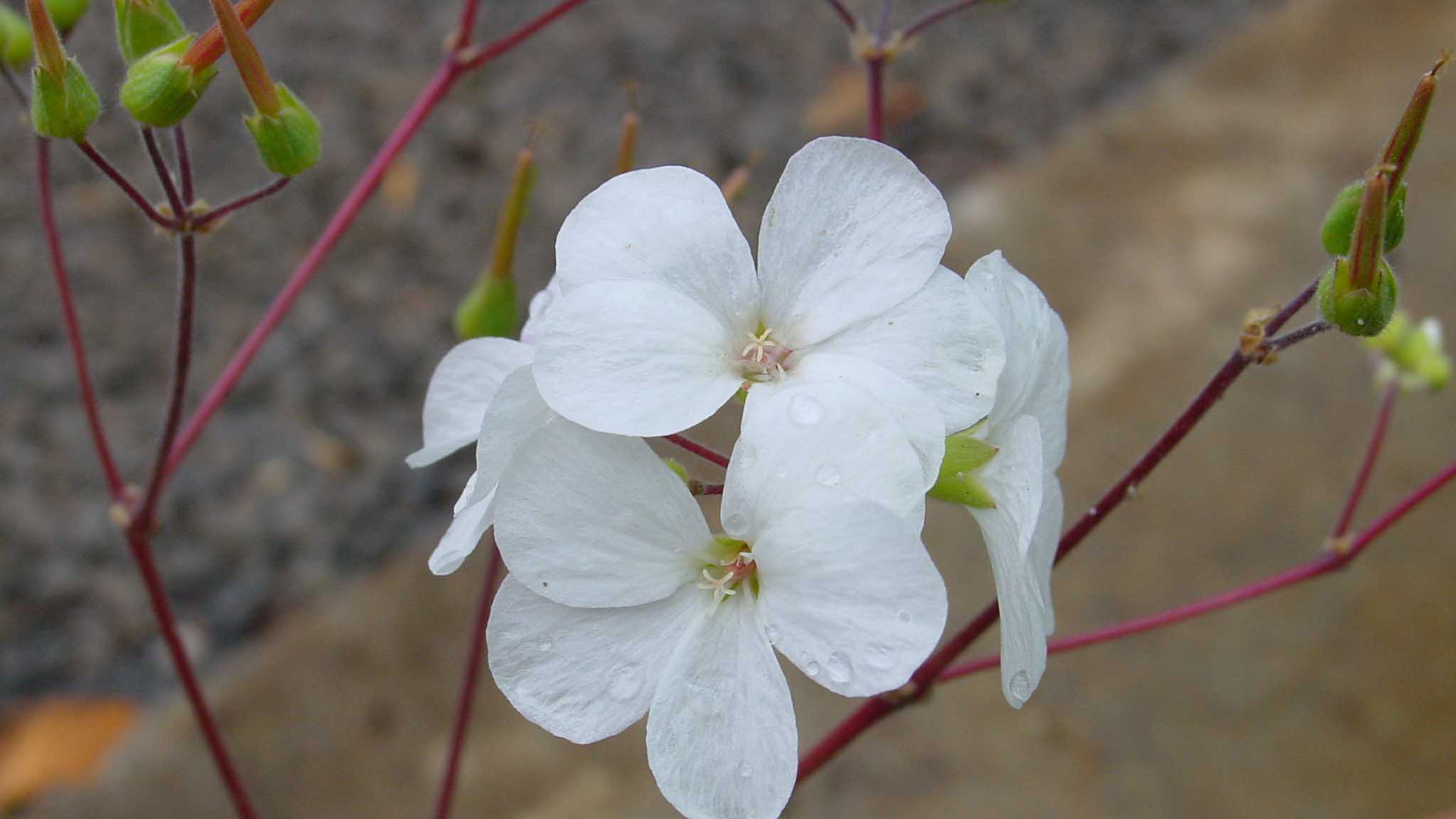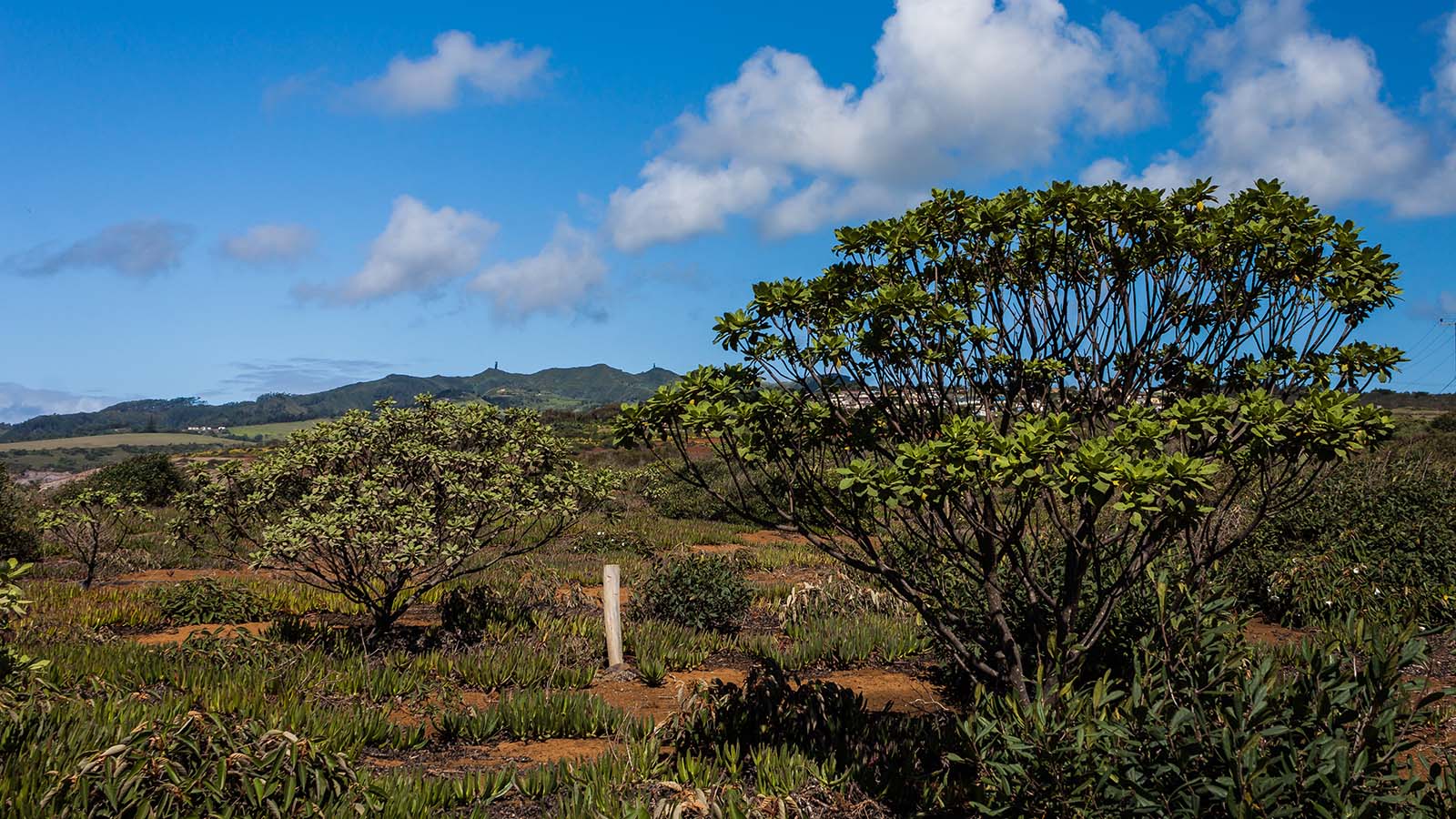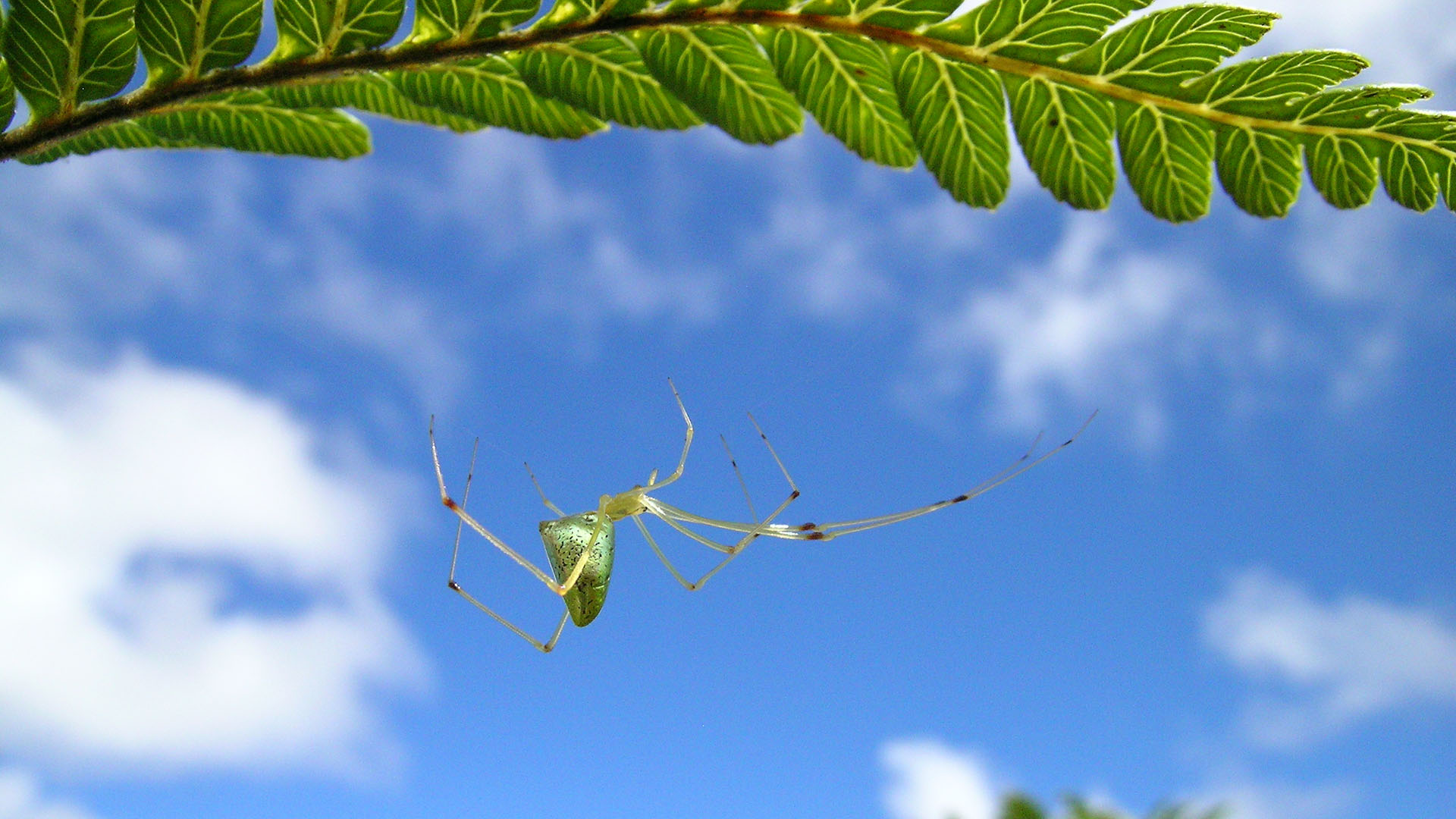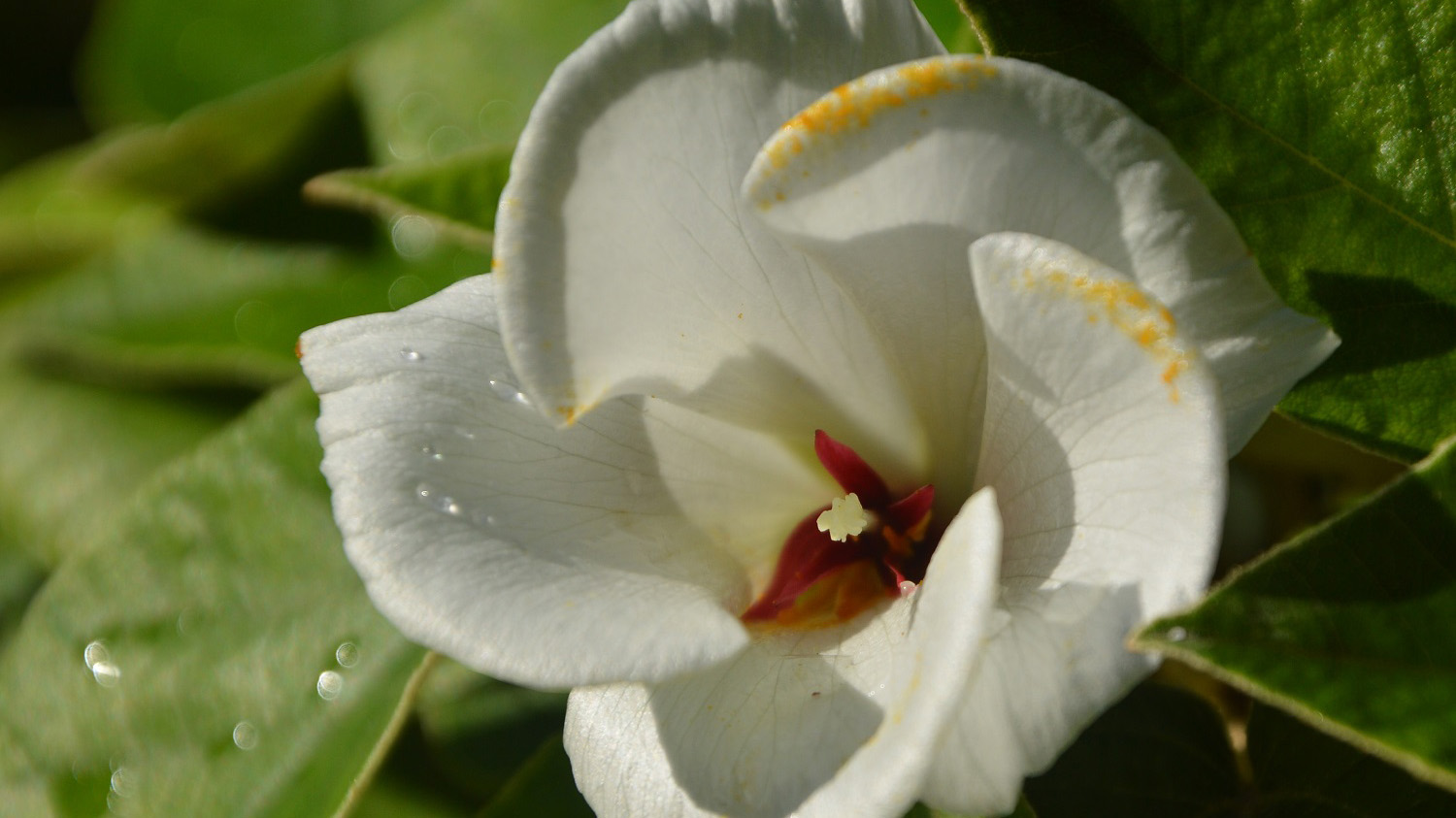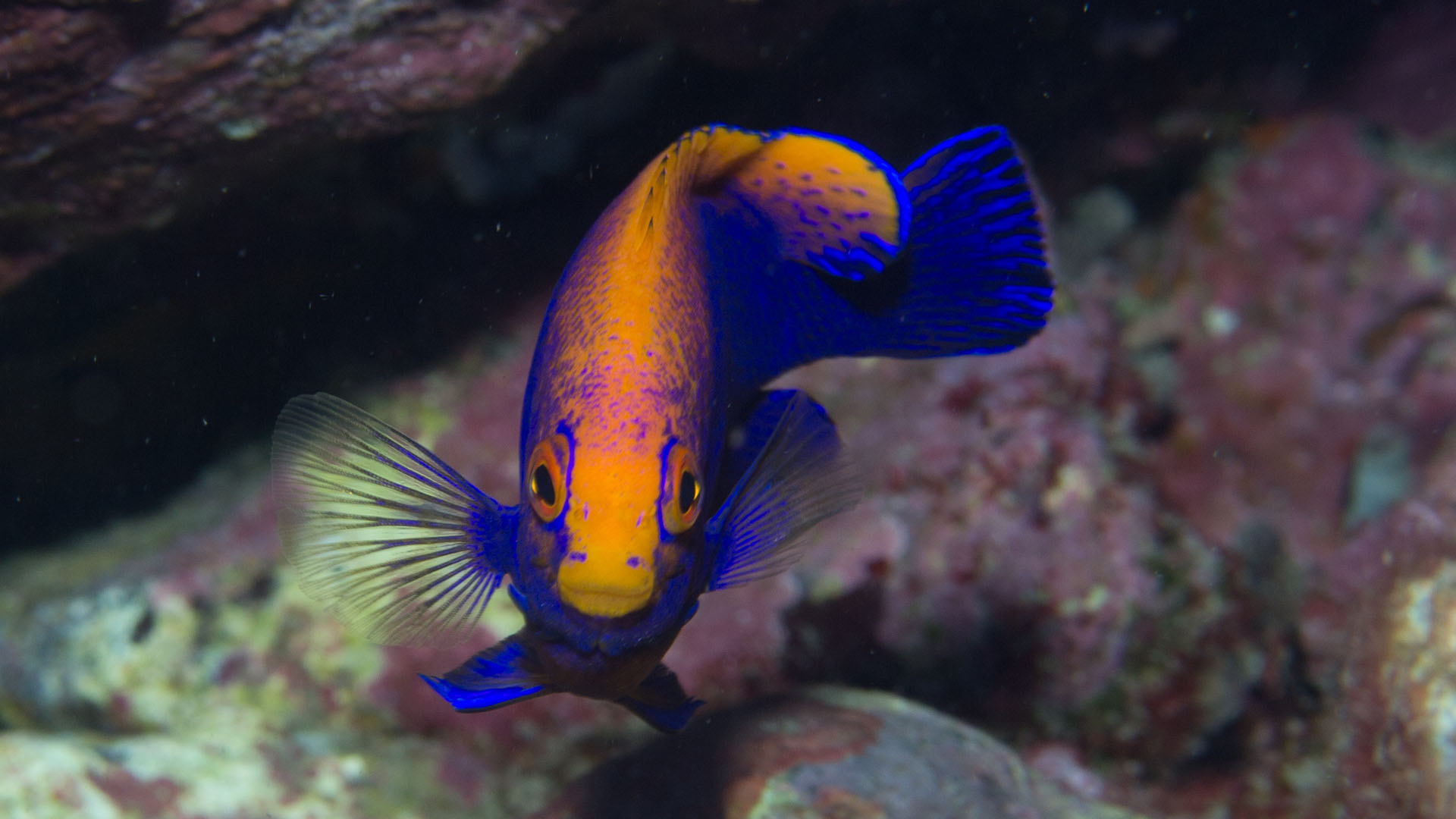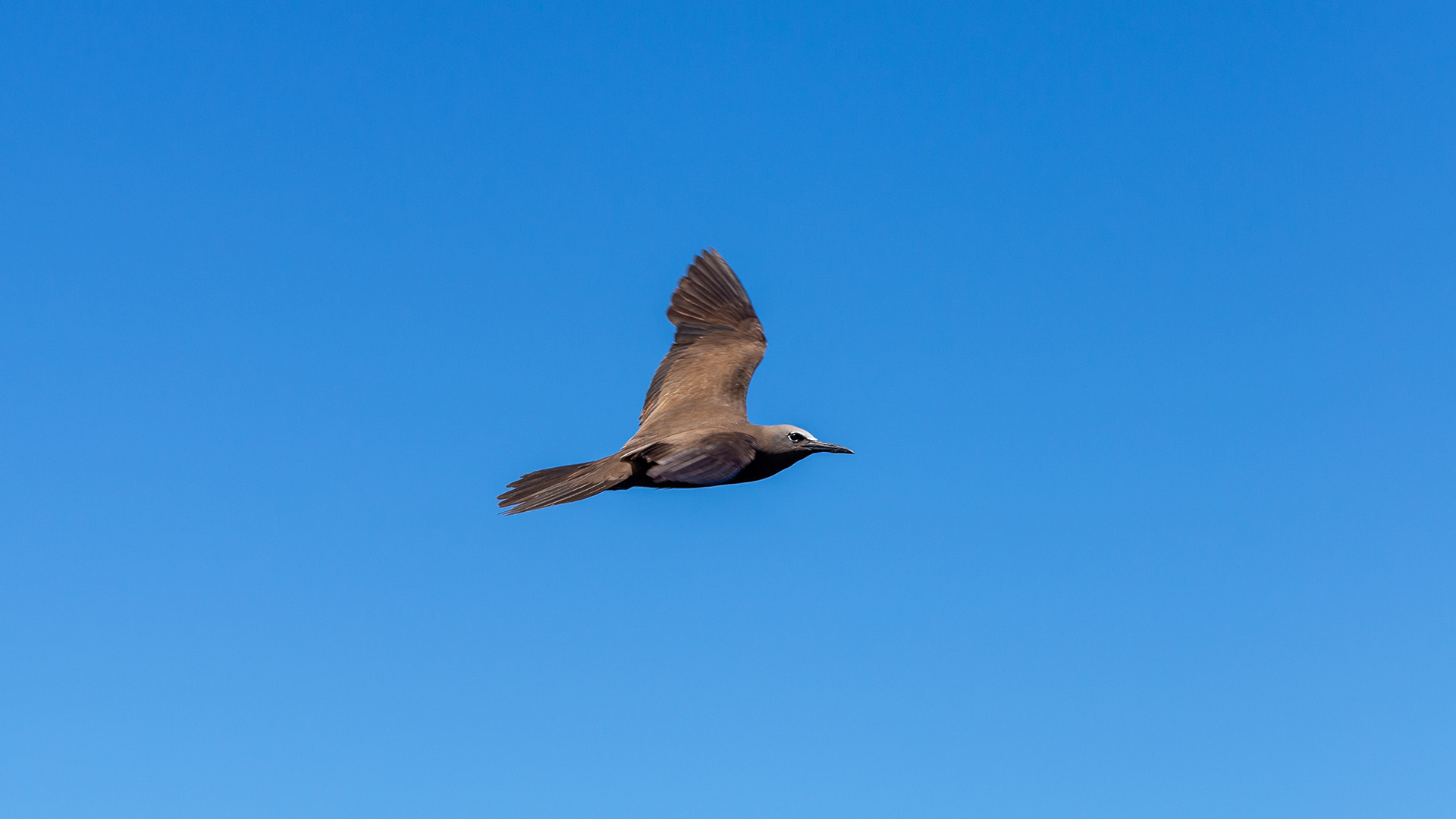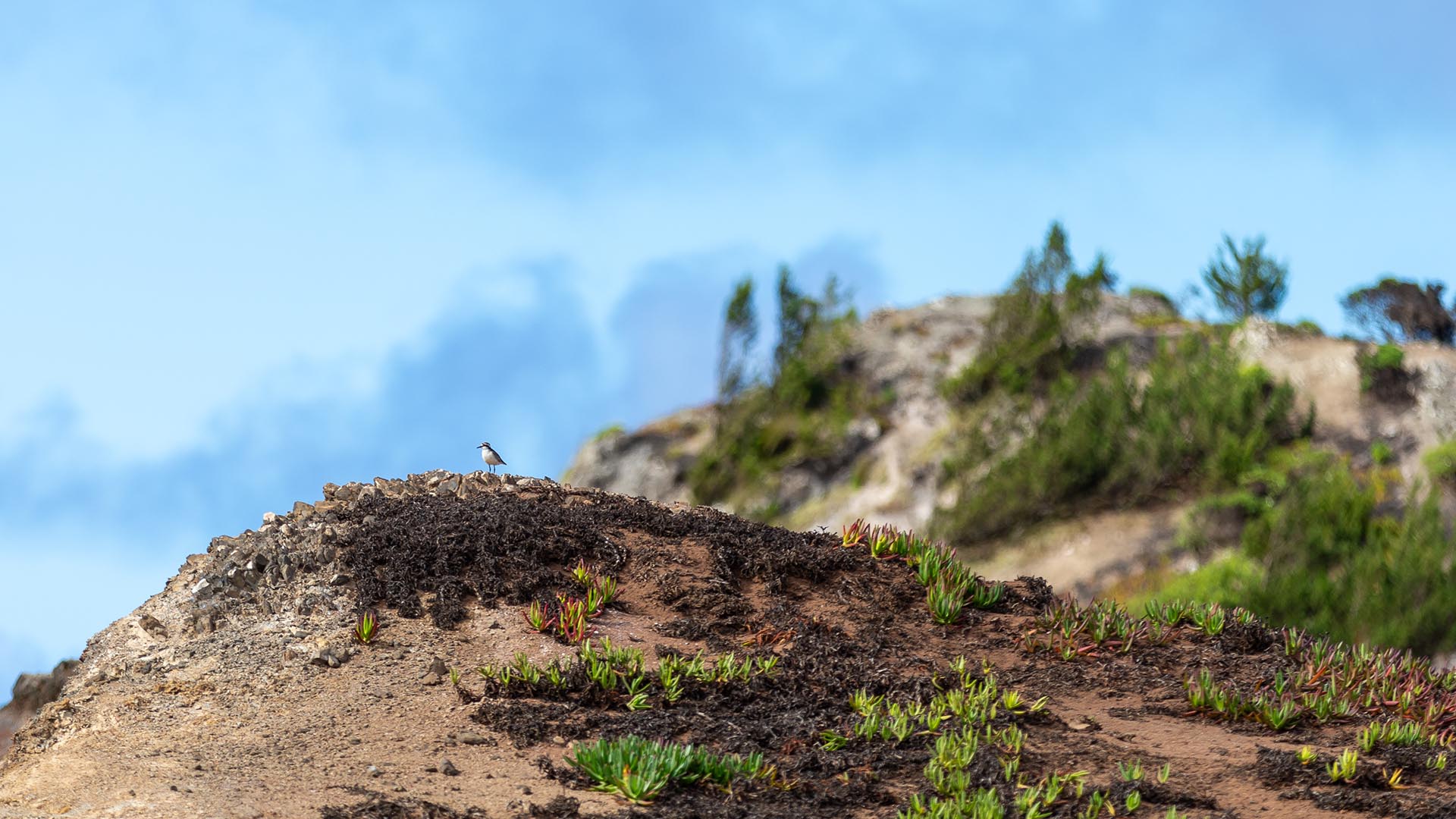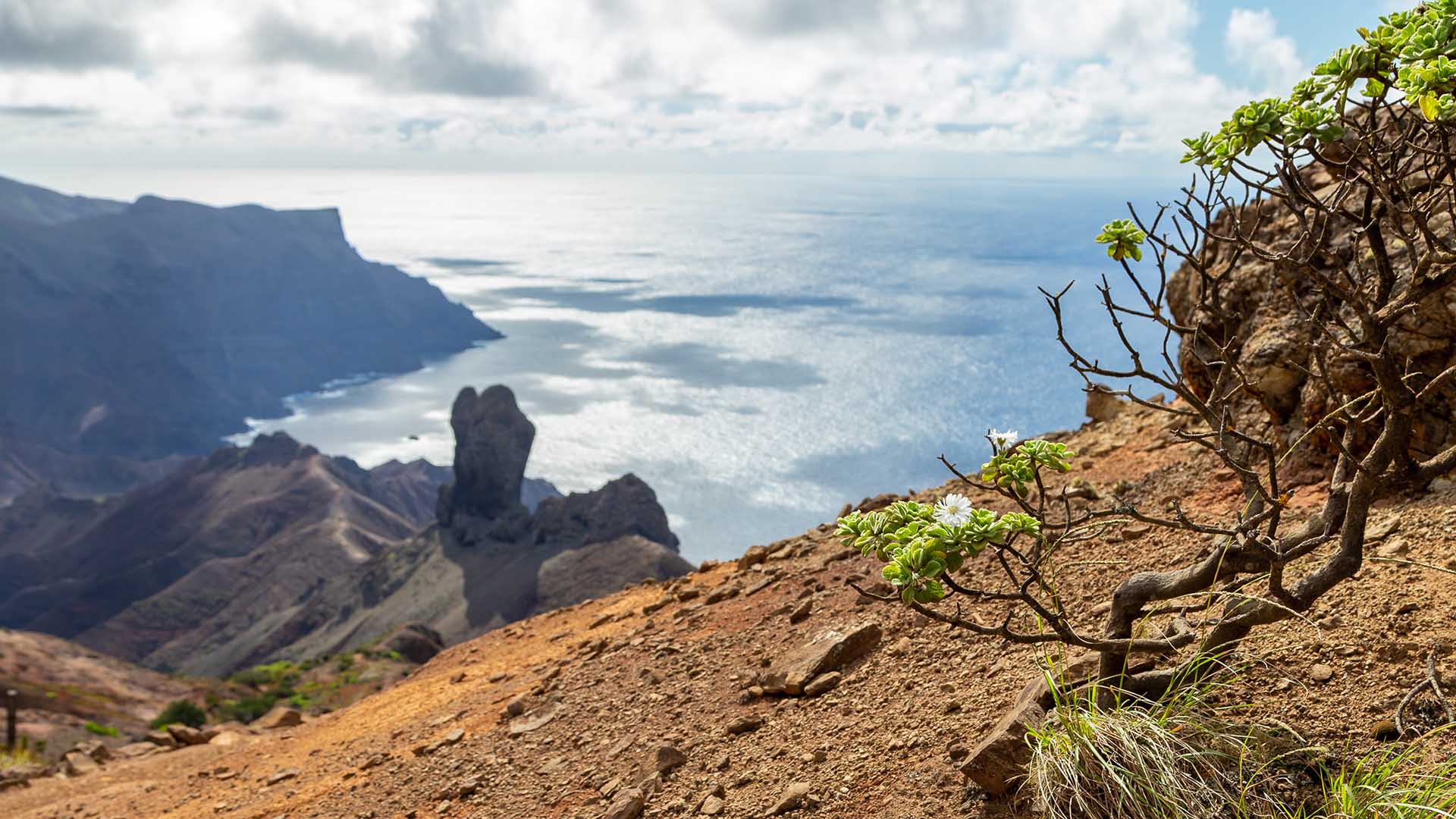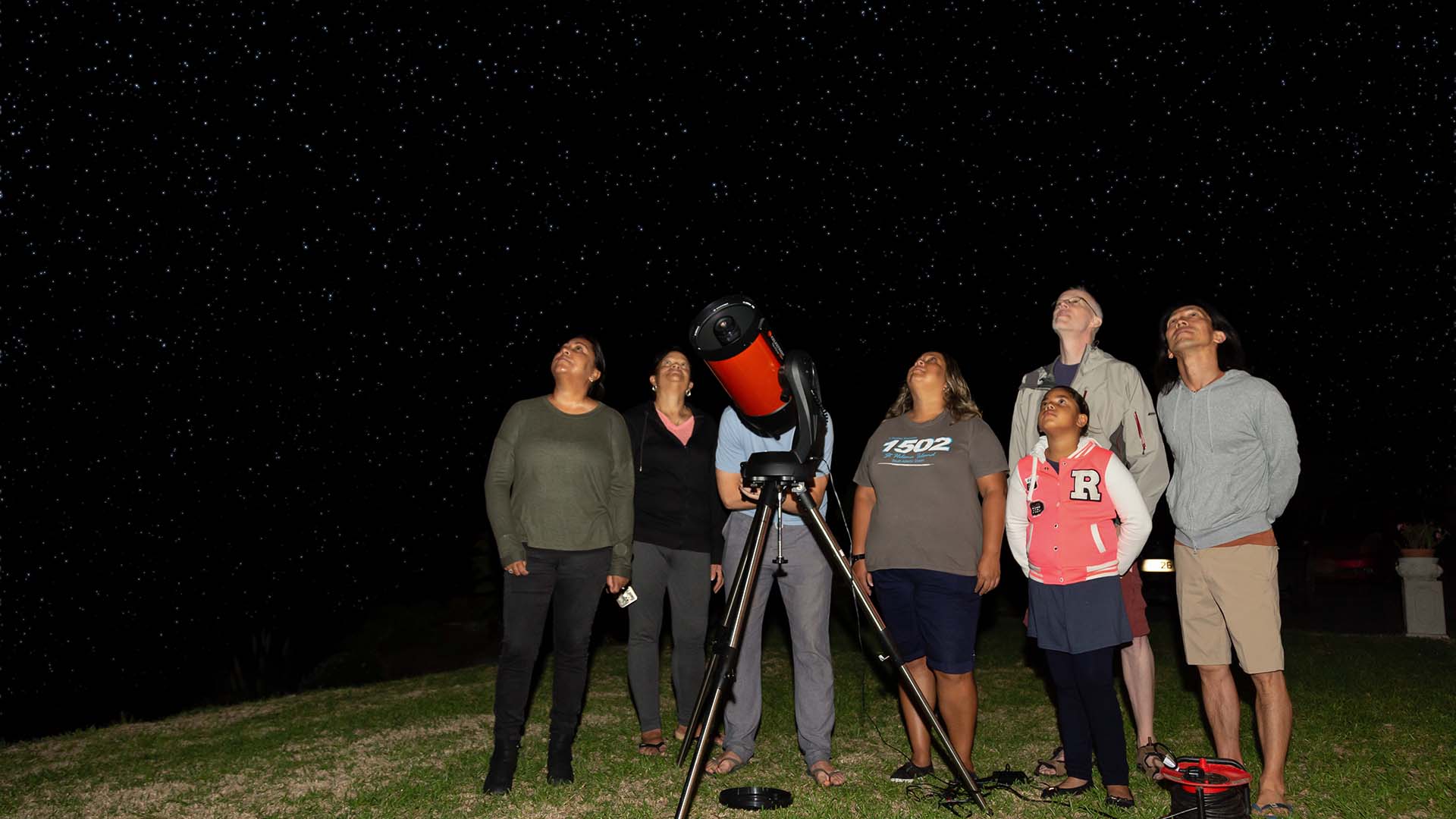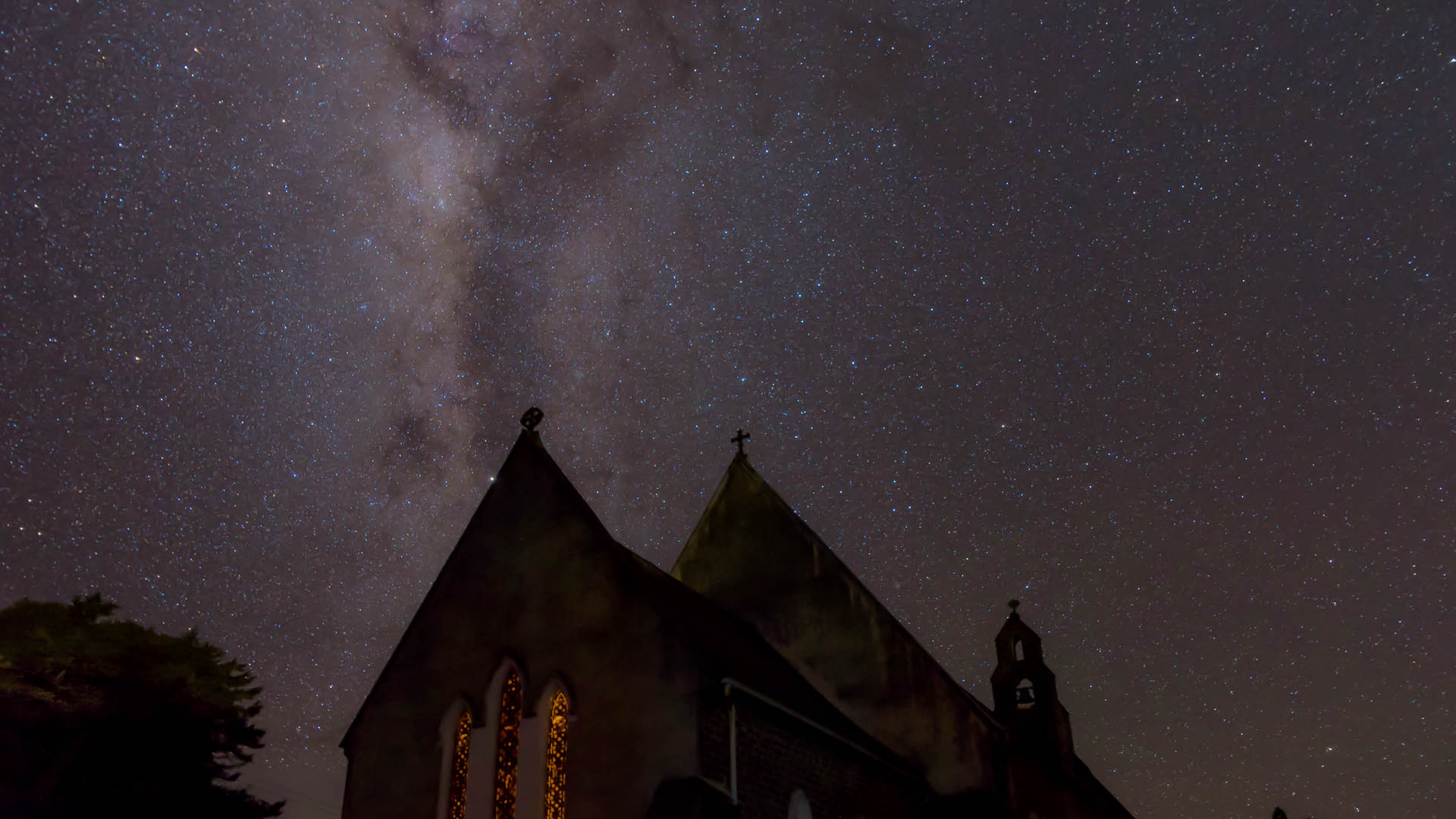
94% of the British endemic species lie within its Overseas Territories and of the 1,547 species, St Helena holds the majority of over 500, and rising. From the tiny Blushing Snail to the world’s oldest living land animal, St Helena nurtures an incredible inventory of unique wildlife of which are surrounded by a contrast of breath-taking natural views.
St Helena’s isolation over the 12 to 14 million years since its emergence from the sea has resulted in such flora and fauna found nowhere else in the world. With a surface area of just 47 sq. miles (122km²) of St Helena holds roughly 30% of all endemic species to be found in the UK and the British Overseas Territories.
Whether you are hiking to the highest peak on island, or snorkelling in our warm waters, you are sure to be amazed by the natural beauty of St Helena.
MEET JONATHAN THE TORTOISE
"The oldest resident of St Helena"
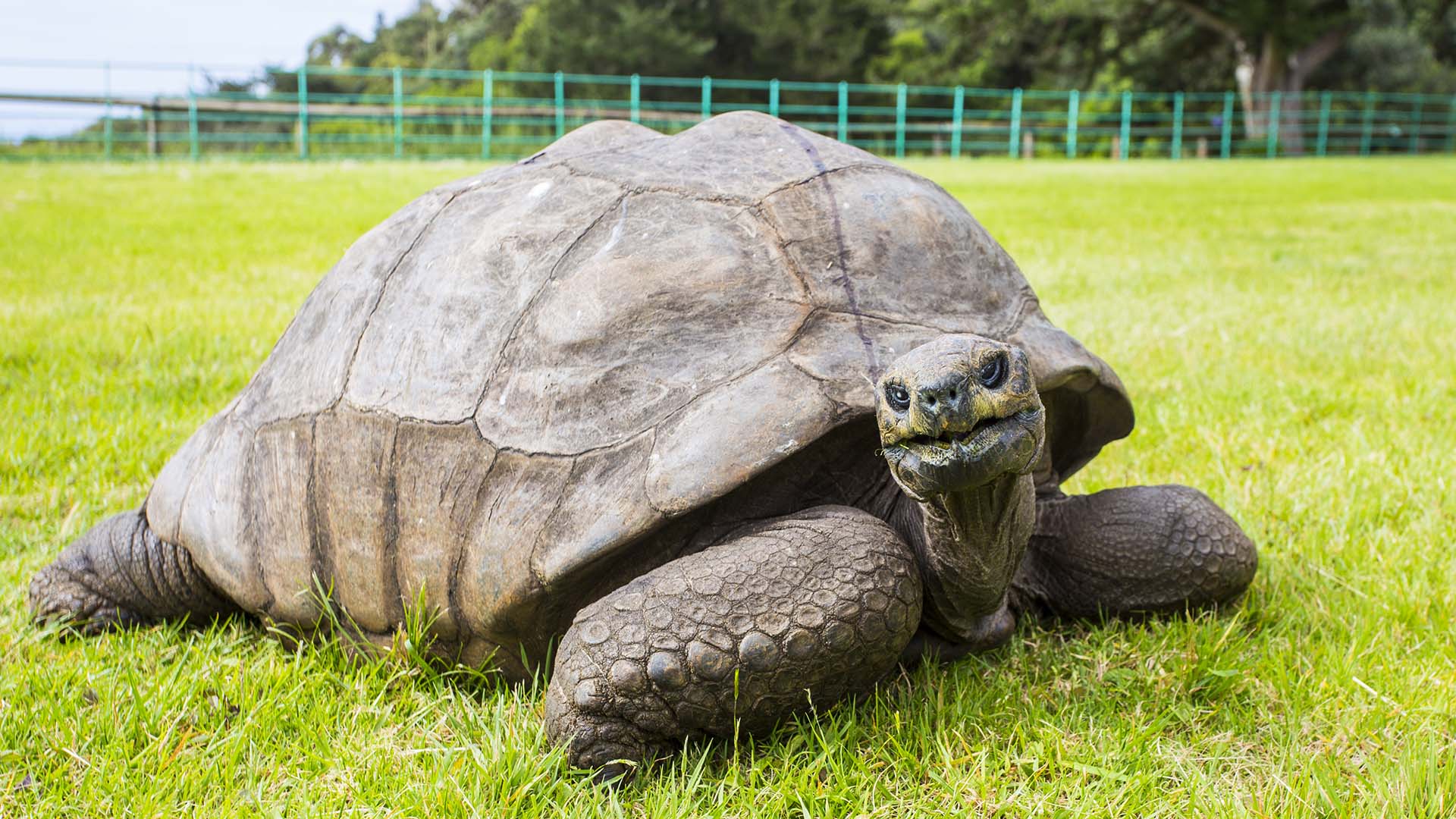
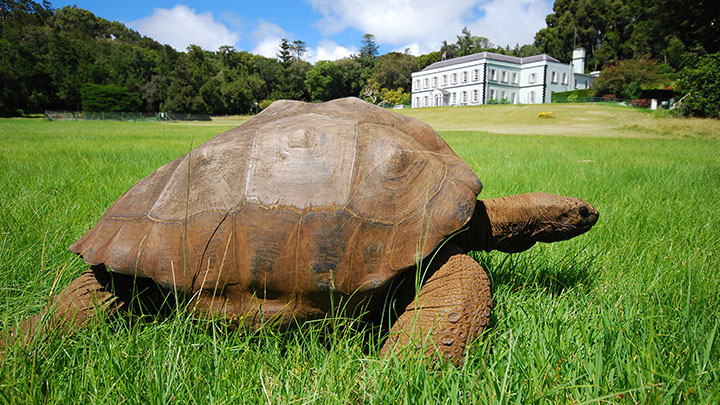
Jonathan is St Helena’s oldest resident, by far. It is estimated that Jonathan is around 180 years old, making him not just St Helena’s oldest Saint, but quite possibly the world’s oldest reptile.
There are four tortoises at Plantation House, the Governor’s residence: Jonathan, who it is thought arrived in 1882, David and Emma in 1969 and Fredrika, in 1972.
In 1997 the Nature Protection Trust of Seychelles, launched a worldwide search of private and public collections, and rediscovered two of the species formally considered extinct. Jonathan has been identified as a Seychelles Giant Tortoise. As such he is a solitary example of a handful of survivors existing in the world.
Plantation House is open for tours every Tuesday at 11am with a special opportunity to step into the paddock and take a selfie with Jonathan – as long as you don’t touch! Take a walk through the island’s history and meet the Jonathan, possibly the oldest living animal in the world.
MEET THE WIREBIRD
St Helena Plover (Charadrius sanctaehelenae)
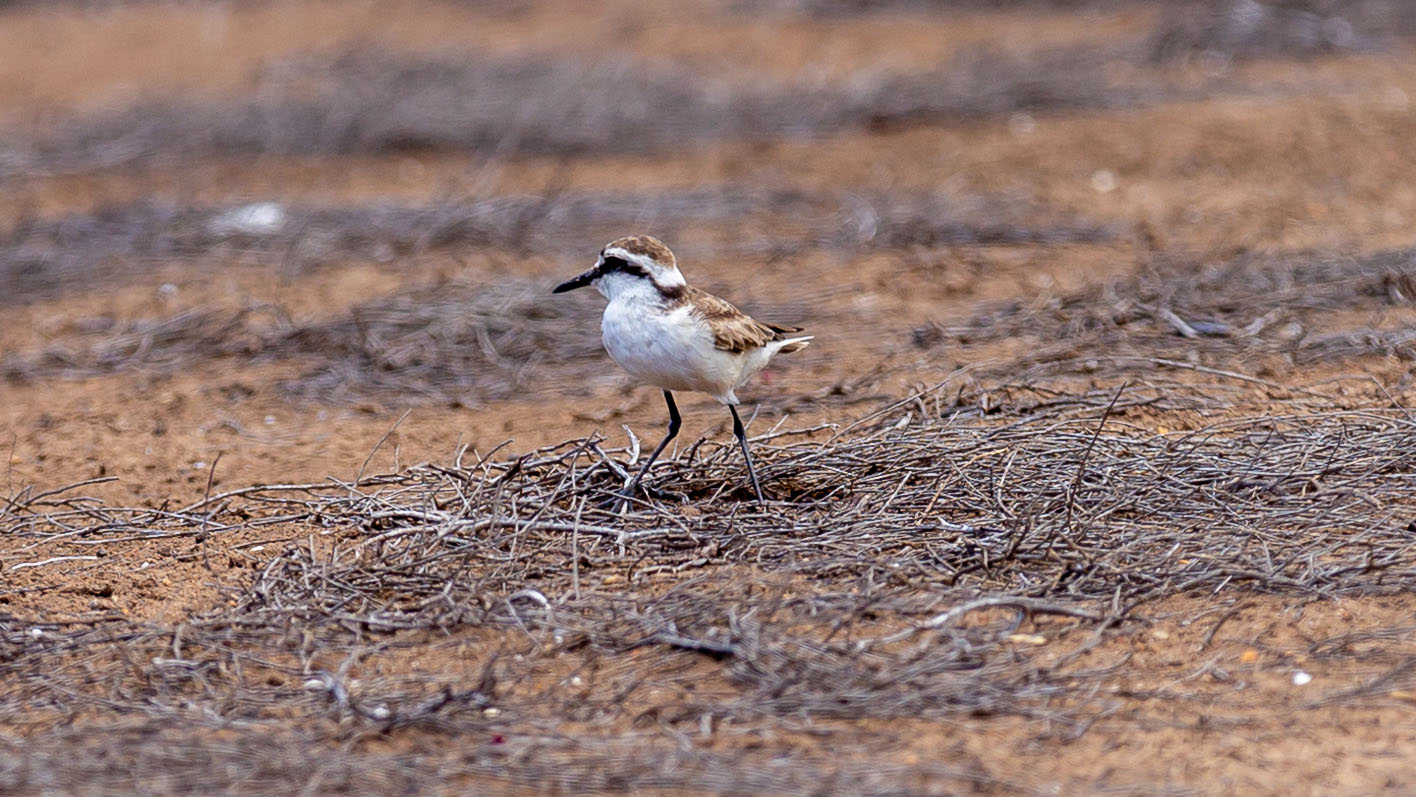
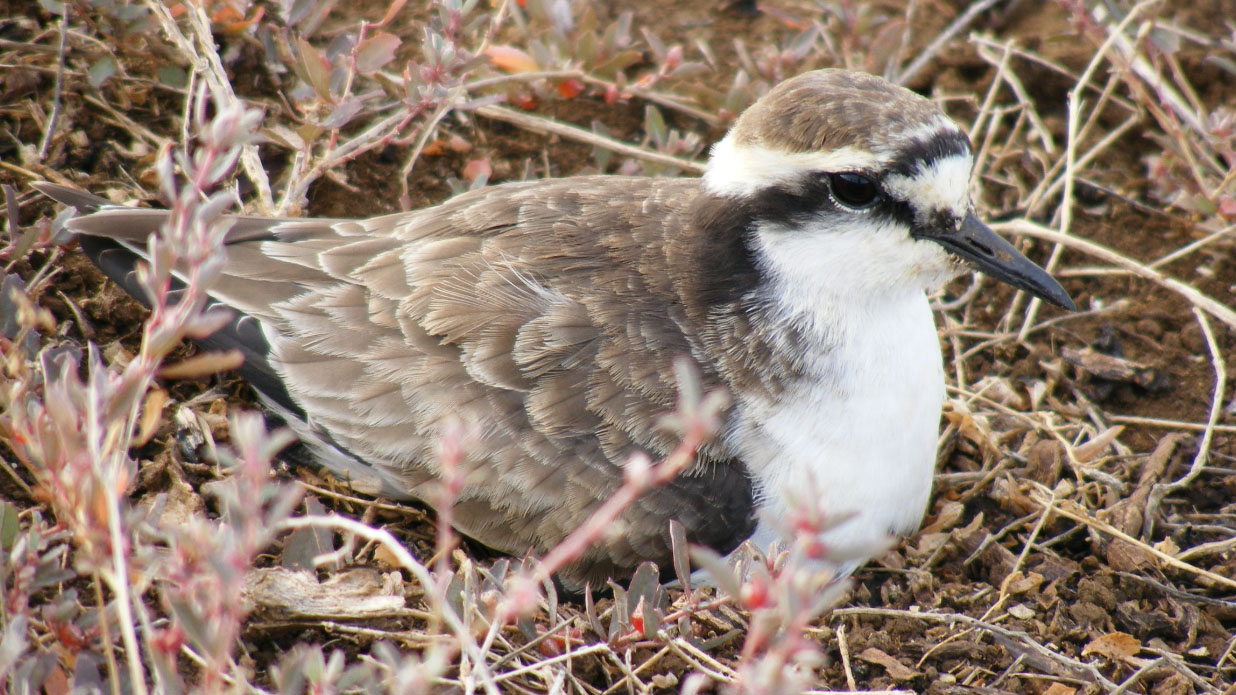
A source of National pride and St Helena’s only surviving endemic bird, is aptly named the Wirebird, due to its long wiry limbs that supports a flurry dark brown and white torso.
The wirebird can be found nesting on dry, mild altitude, pasture land, mainly in Deadwood – the former home to the Boer Prisoner camp site.
Despite official protection under the Game Law (1894), a decline in numbers due to ferel opportunists and changes in grazing habits, led to the species becoming ‘endangered’ in the early 21st century.
A programme of predator monitoring and control has been carried out since 2011 at core wirebird sites such as Deadwood. This initiative was implemented by the St Helena National Trust supported with grants from the Department for Environmental Food and Rural Affairs (DEFRA), DFID’s Overseas Territories Environment Programme and the Royal Society for the Protection of Birds (RSPB).
Each year mid breeding season (January) the St Helena National Trust work with volunteers to carry out an island wide census over 31 recorded sites. This enables the Trust to gather information on wirebird population health and to also identify patterns which indicate whether conservation efforts are effective.
Select an area to explore below
FLORA
The Flora of St Helena is particularly diverse, with hundreds of endangered endemic species. In recent years there has been a program to conserve and replant the great forest on the island which was destroyed over the years. The Millennium Forest project has been successful and the forest is expanding rapidly. More information on the Millennium Forest can be found on the St Helena National Trust website.
St Helena harbours at least 45 species of plants unknown anywhere else in the world.
Today there are three major vegetation zones: the tree-fern thicket of the highest parts of the central ridge (central peaks). Of these, only the tree-fern thicket is a natural vegetation type. The middle elevations were formerly covered with native woodland of gumwoods (Commidendrum – St Helena’s national tree) and other trees, now largely destroyed. The barren “Crown wastes” were formerly covered with native scrub, of which a major component was probably St Helena ebony (Trochetiopsis ebenus and Trochetiopsis melanoxylon).
As well as the intrigue of endemic flora, St Helena hosts many other beautiful, exotic plants. The arum lilly (St. Helena’s national flower) is grown naturally in the wild and can be found near the banks of roadsides of the Sandy Bay Ridges, or Casons and Bluehill areas.
Places to see the endemic flora
The Castle Gardens
Diana’s Peak National Park
Peak Dale
High Peak
The Millenium Forest
George Benjamin Arboretum
The Clifford Arboretum

St Helena Wirebird
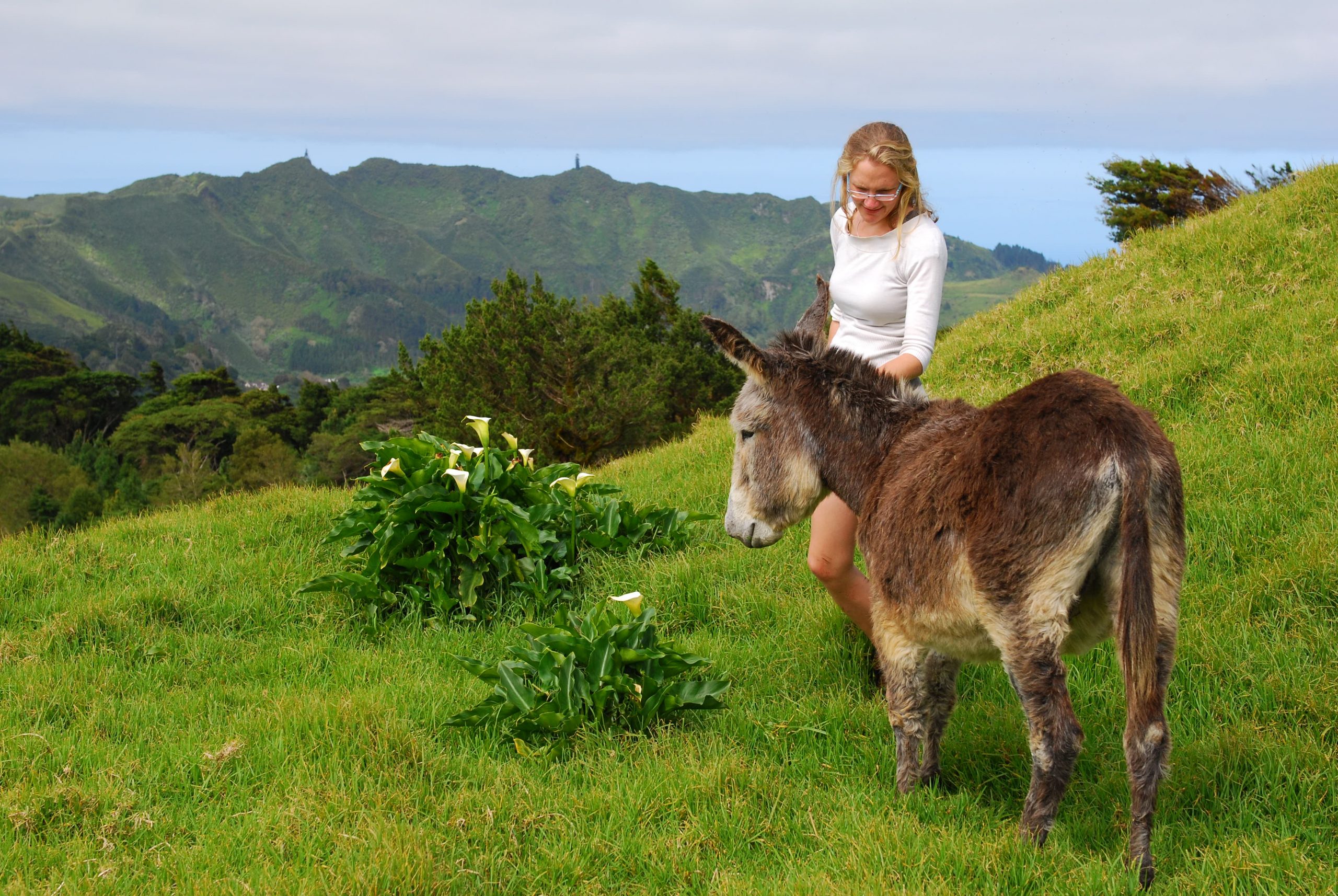
Donkey Sanctuary
FAUNA
St Helena island has an incredible range of wildlife; its isolation over the 12 to 14 million years since its emergence from the sea has resulted in a unique range of animals found nowhere else in the world. 94% of the British endemic species lie within its Overseas Territories and of the 1,547 species, St Helena holds the most at over 500, and rising. This means that the 47 sq. miles (122km²) of St Helena holds roughly 30% of all endemic species to be found in the UK and the British Overseas Territories.
St Helena Island is now a breeding site for seabirds, as is Ascension. St Helena used to have more endemic birds, however all but one, are now extinct. The wirebird (Charadrius sanctaehelenae) is a type of plover which lives in burrows around the island, and is the national bird. It is called the wirebird due to its thin legs that look like wire.
There are no native mammals on St Helena. Over the centuries several introduced mammals have gone feral. On St Helena these are cats, dogs, rabbits, rats and mice; donkeys and goats no longer roam free. Goats were introduced to St Helena by the Portuguese to provide passing ships with fresh meat.
About 1100 species of land invertebrates have been recorded from St Helena, and over 400 of these are endemic and occur nowhere else. The giant St Helena earwig is almost certainly extinct, the last chitinous remains having been found in the 1990s.
Johnathan, a Seychelles tortoise, was brought to St Helena in 1882. Jonathan’s current age has been estimated at approximately 180. He is said to be the oldest known member of his species, Testudinipae cytodira. Jonathan lives on the grounds of Plantation House along with David, Emma, and Fredricka. These other three giant tortoises have joined Jonathan on the lawn of Plantation House only since the late 1960s. While occasionally eggs are laid by the female tortoises, none has ever produced offspring. You can visit the grounds at any time of day by viewing the tortoises through an outstretched corridor, located at the bottom of the grounds.
Diana’s Peak National Park is home to about 33 species of spiders, 22 of which are endemic to St Helena. A few are conspicuous by their webs, whilst others can be seen hunting on the fronds of tree ferns or on the leaf rosettes of black cabbage trees. The golden sail spider belongs to the Theridiidae family which builds irregular three-dimensional scaffold webs. When hunting they steal their prey or eat the young from the webs of other spiders. The endemic blushing snail and the Spiky Yellow Woodlouse ( a woodlouse species known to glow under ultraviolet (UV) light) can also be found at Diana’s Peak National Park.
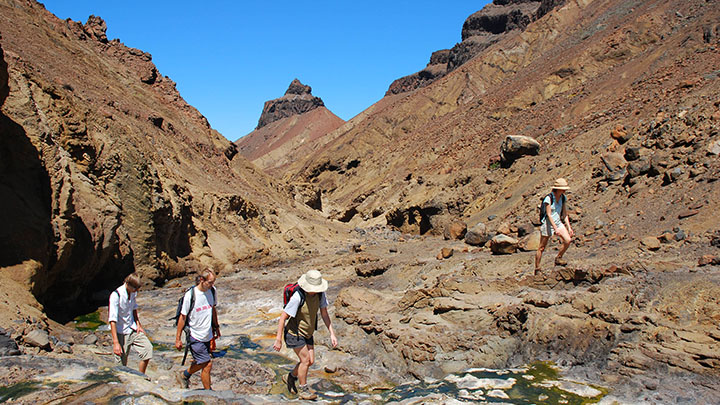
On route to Lot's Wife Ponds
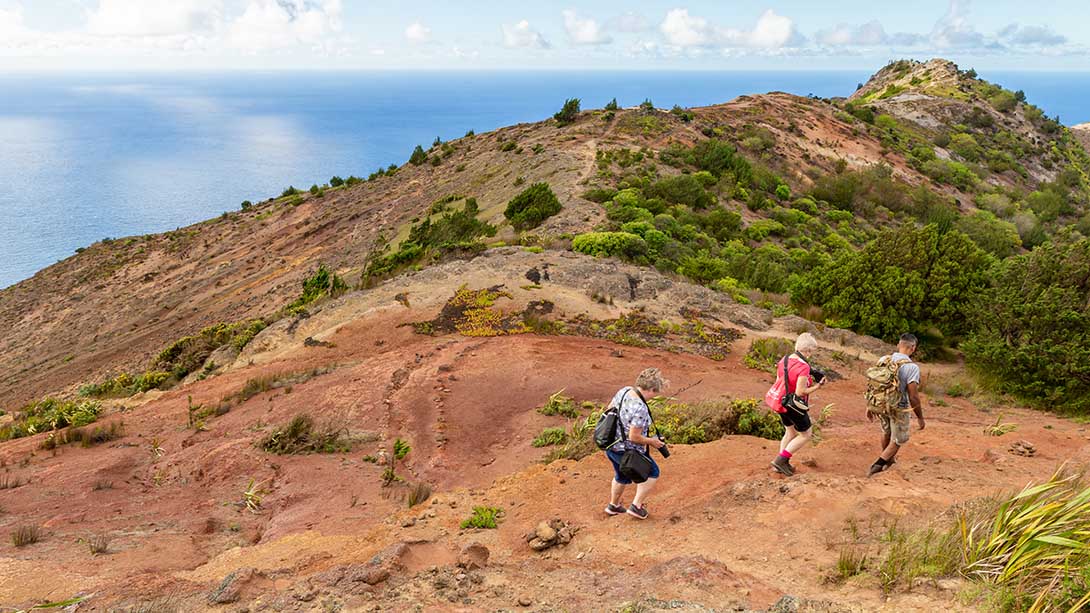
Climbing the hills
GEOLOGY
The peak of an extinct volcano, only 47 square miles in surface area, just to the east of the Mid-Atlantic Ridge, the island has some of the most diverse scenery in the world.
The modern landscape reflects areas coated in naked rock and coloured paint pallet deserts, with higher interiors of green foliage.
For rock buffs, St Helena is geomorphology heaven. The gigantic rock formations and lava flows near the bottom are breathtaking, as are some coloured sand dunes. The unworldly geology and contrasting landscapes is breathtaking.
The riotous shapes of the formations have earned them the names like “Lot’s Wife”, “Asses Ears” and “The Barn”.
Geologists will tell you there is nothing like St Helena on the planet. Charles Darwin, inspired by Seale’s drawings, visited the island on the voyage of the HMS Beagle, and wrote a chapter on St Helena in his ‘Geological Observations on the Volcanic Islands’ (Darwin, 1844).
St Helena is very three-dimensional. It probably has more miles of ridges, gullies, valleys, ravines and gulches per unit area of land than anywhere else in the world, certainly more than on any other island. Now imagine a sky with a checkerboard of clouds and azure, and sunlight shining through the cloud breaks. This is a moveable feast for the eyes, a photographer’s paradise.
St Helena’s landscape and geology are without equal among islands of the world. The few built-up areas are unchanged since Georgian times. Like some other isolated locations, this lonely island in its early years was used as a place of exile for felons or war prisoners, the most celebrated of whom was Napoleon. Forts were built to spot outsiders who were helping prisoners, plotting escape.
Landscape and scenery are ‘spectacular’, ‘unsurpassed’ and ‘edenesque’. The peak of an extinct volcano, only 47 square miles in surface area, just to the east of the Mid-Atlantic Ridge, the island in fact has some of the most diverse scenery in the world.
The island’s interior must have been a dense subtropical forest but the coastal areas were probably quite green as well. The modern landscape is very different, with a lot of naked rock in the lower areas, and a high interior that is green, mainly due to imported vegetation. The dramatic change in landscape must be attributed to the introduction of goats and the introduction of new vegetation. As a result, the string tree (Acalppha rubrinervis) and the St Helena olive (Nesiota elliptica) are now extinct, and many of the other endemic plants are threatened with extinction.
The highest point on St Helena is Diana’s Peak (2,685 ft. / 823 m). On the higher central ground, bush and semi-tropical vegetation is abundant. This changes to grassland and pastures before the terrain becomes drier and almost barren below 500m to the sea. The only inland waters are small mountain streams, which occasionally dry up in the summer months.
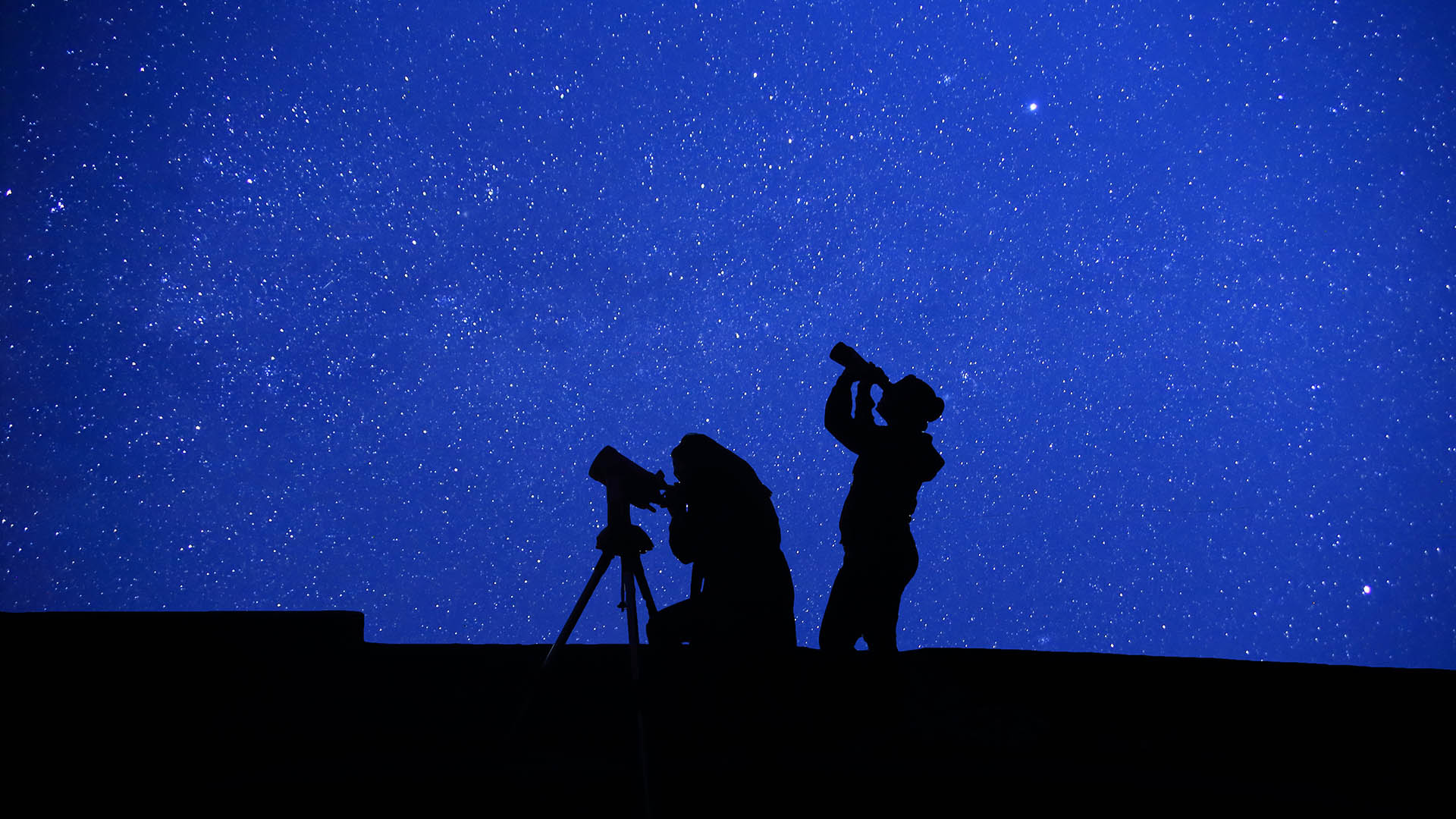
Silhouette shot
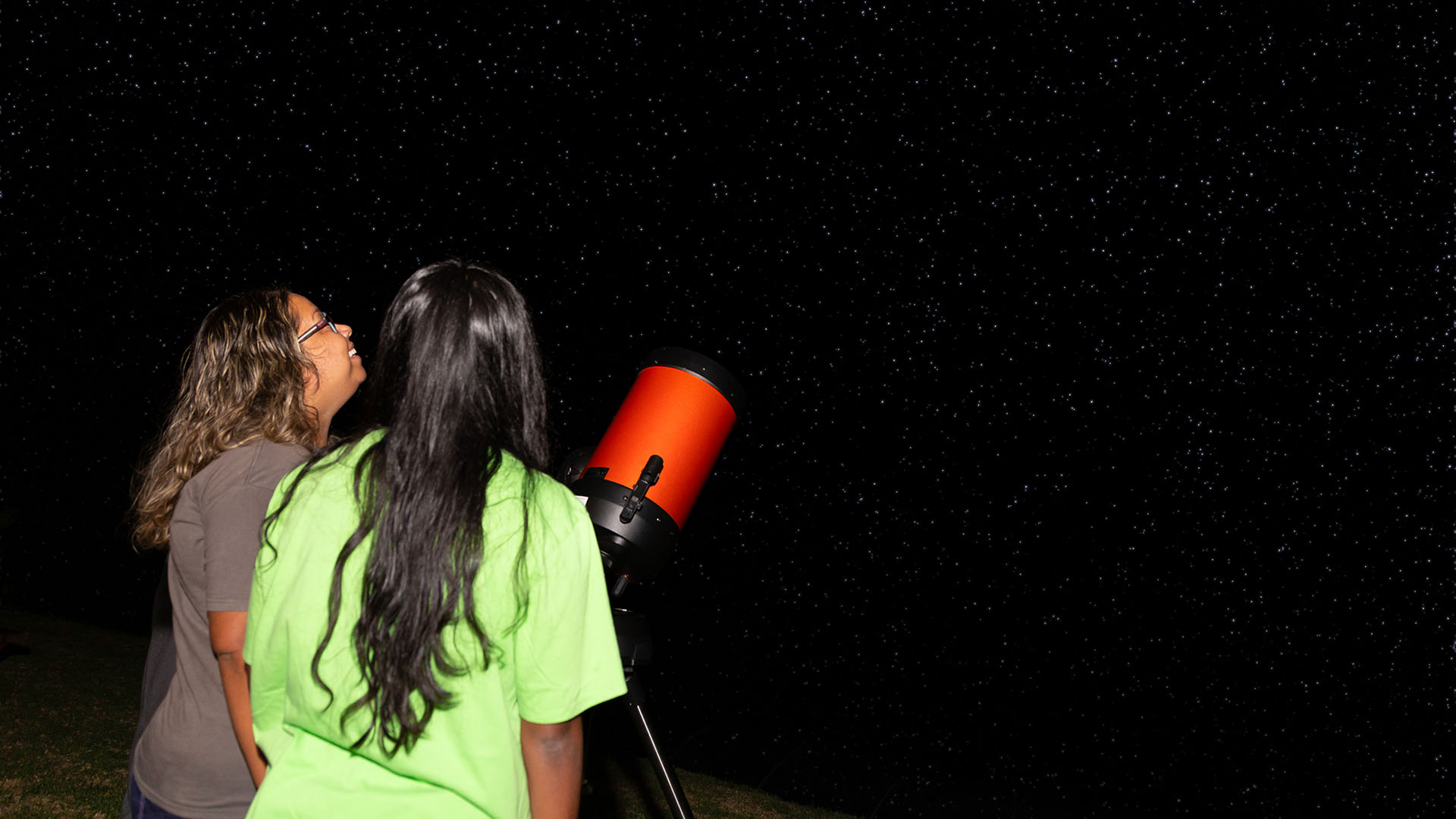
Star Gazing on St Helena
Dark Skies
St Helena’s position near the Equator, and height above sea level, means that nearly every star in both the northern and southern hemispheres can be seen at some point in the year. The quality of St Helena’s night sky is exceptional. It is possible to see most of the noticeable constellation in both the northern and southern hemisphere for example the Plough and the Southern Cross can be seen in the same sky.
As a developing tourist destination, St Helena has been identified as having an exceptional darkness of the night sky that makes for spectacular stargazing on the island. With this potential, St Helena is currently enhancing the local stargazing product and working towards the International Dark-Sky Association (IDA) Dark Sky Status.
In December 2019 Saint Helena Tourism submitted an application to the IDA to be accredited as a Dark Skies Destination. By having this accreditation it would allow to promote and sell Saint Helena Island as a Dark Skies Destination internationally.

